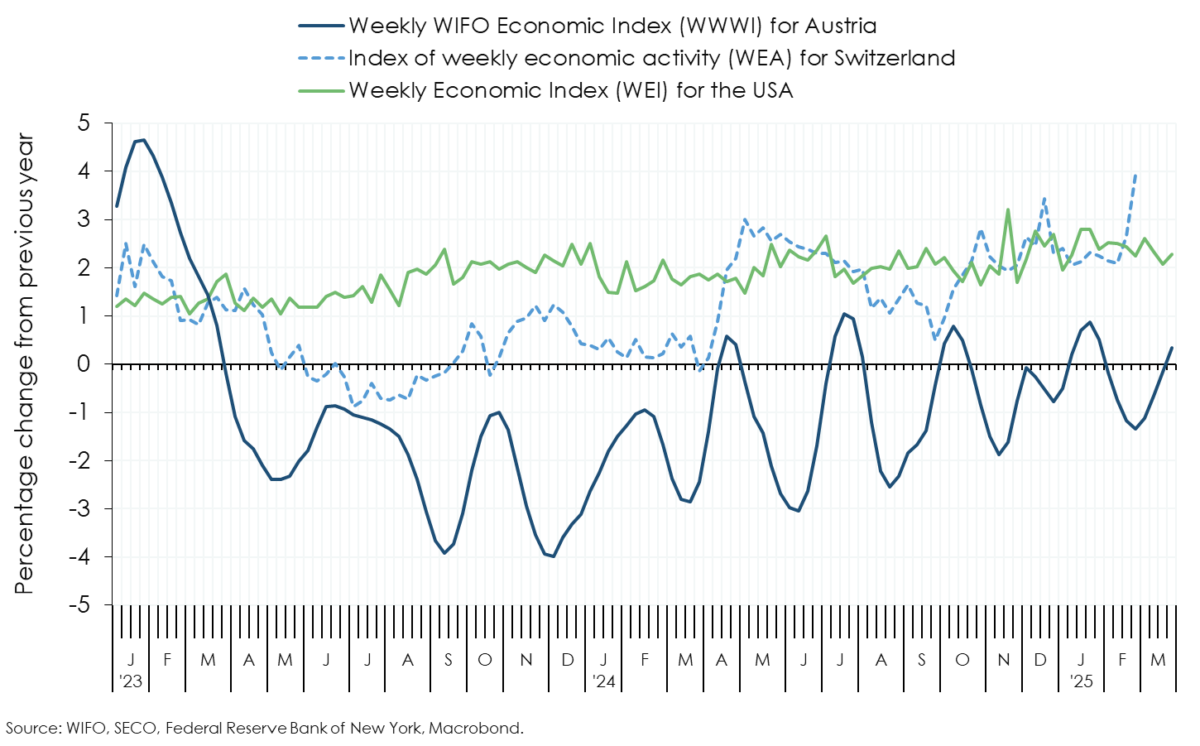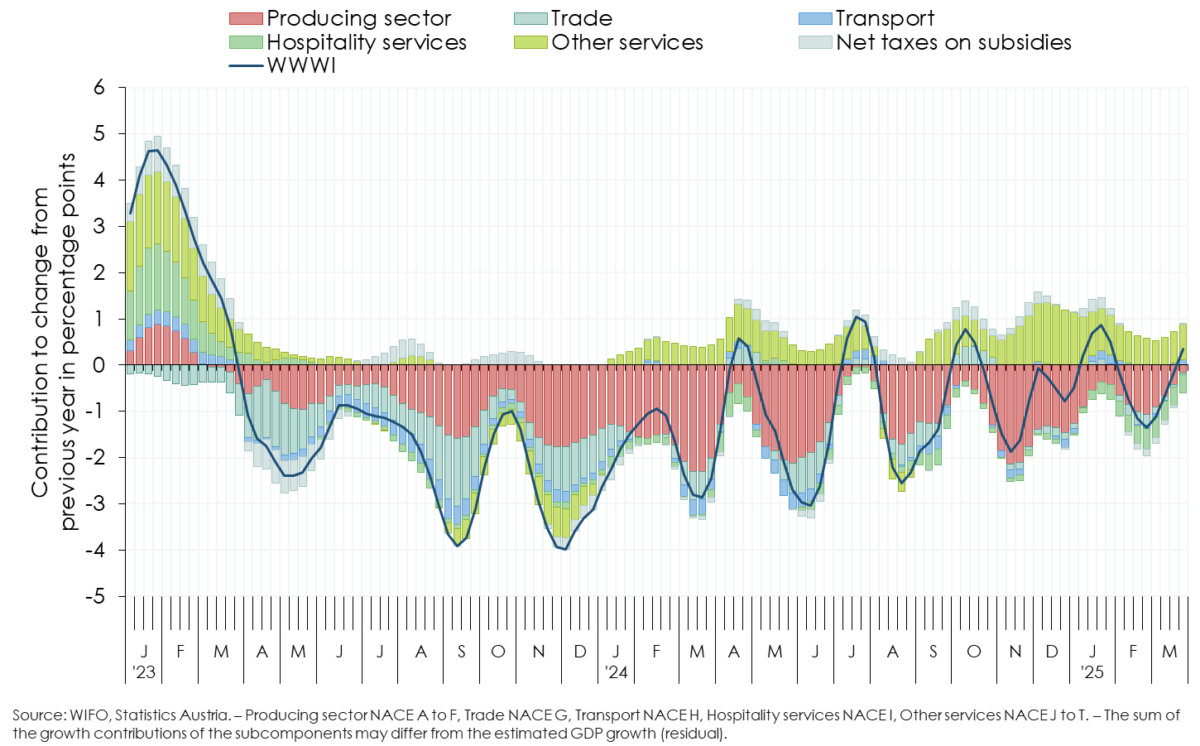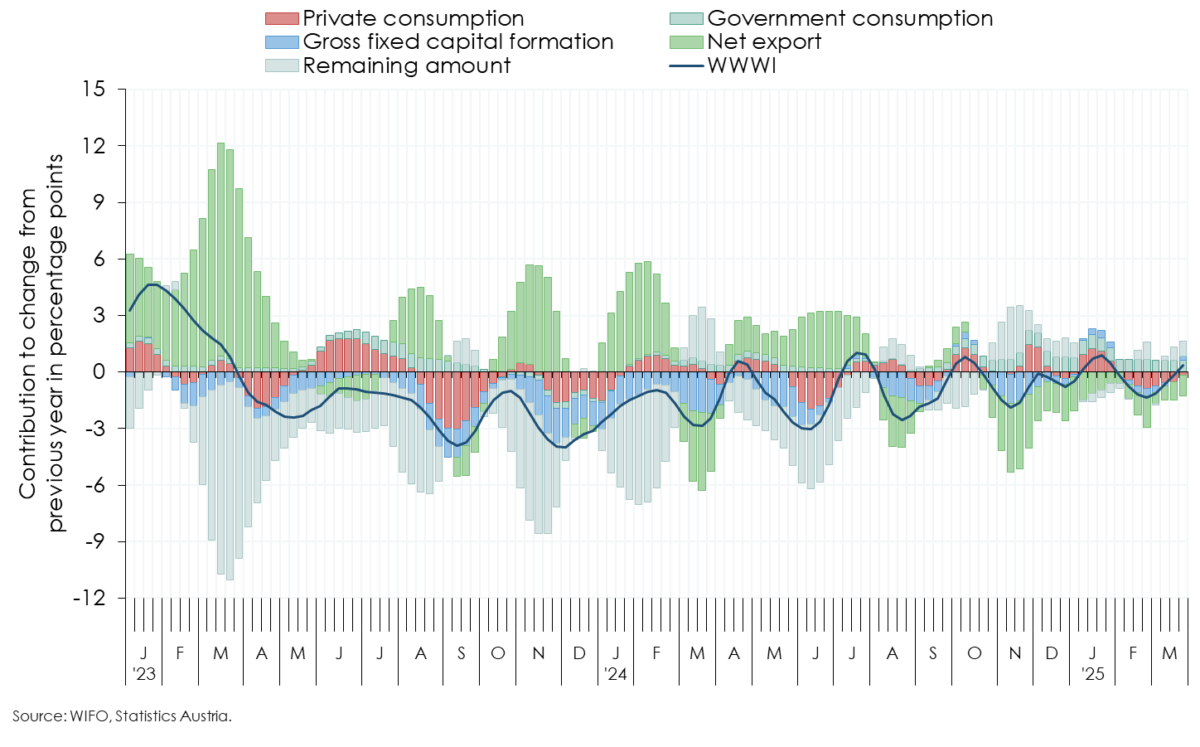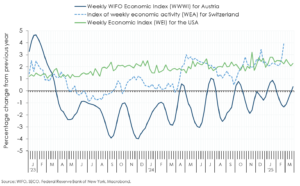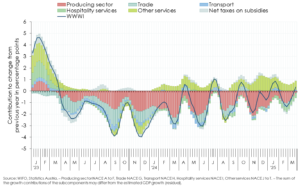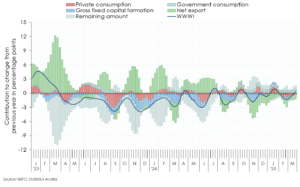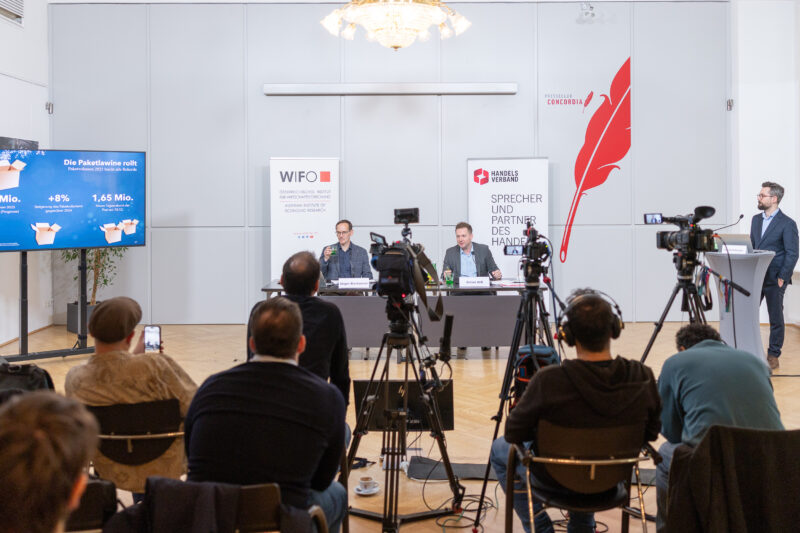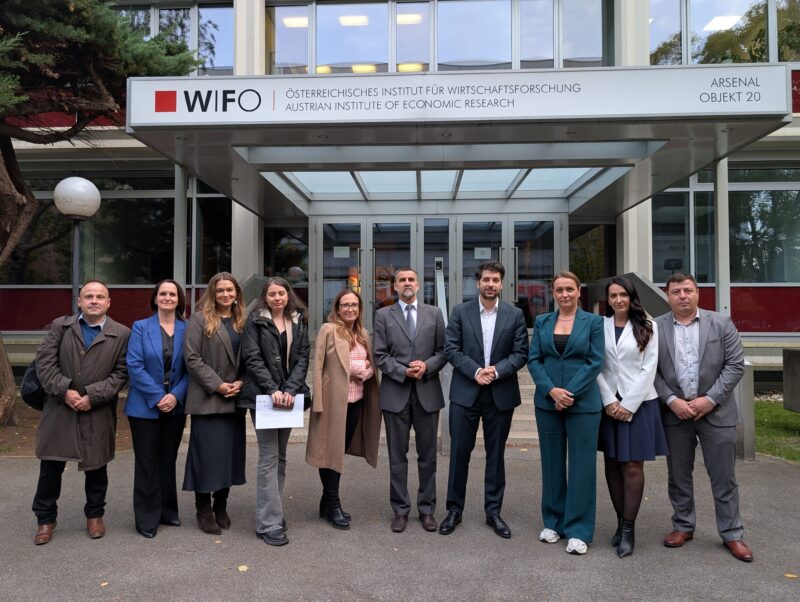
Weekly WIFO Economic Index
WWWI for GDP and its subcomponents
Based on the weekly GDP indicator (WWWI), domestic economic output was ¾ percent lower in February (calendar weeks 6 to 9) and ¼ percent lower in the first half of March (calendar weeks 9 and 10) than in the previous year (January +¼ percent, revised)1.
The inflation-adjusted volume of non-cash transactions as an indicator of household consumption expenditure shows that demand for goods (retail sales) and services stagnated in February compared with a year earlier. Private consumption is therefore likely to have stagnated in February and to have been ¼ percent lower in the first half of March than in the same period of the previous year (January +1½ percent).
The development of gross fixed capital formation is determined by economic output (industrial production) and sentiment in the manufacturing sector, as measured by the WIFO-Konjunkturtest (business cycle survey). In February, investments are expected to have been 1¾ percent lower than in the previous year and ½ percent lower in the first two weeks of March (January +¼ percent).
Developments in industrial production and tourism, as well as in the main components of demand and the resulting effects on external trade, resulted in a negative contribution of net exports to GDP growth of 5 percentage points in February (January –1¾ percentage points).
The number of trucks on Austria's motorways fell in February compared to the previous year. Rail freight transport, the number of passenger flights and the volume of freight handled at Vienna Airport increased in February. According to the WIFO-Konjunkturtest, the assessment of the current business situation by companies in the transport sector worsened again in February, with the majority remaining in negative territory. Based on these indicators, value added in the transport sector (NACE 2008, section H) is expected to have stagnated in February compared to the previous year (January –1 percent).
Employment in the goods-producing sector (NACE 2008, sections A to E) continued to fall due to the recession, and the number of job seekers has been rising at double-digit rates year-on-year since November 2023. The WIFO-Konjunkturtest shows a slight improvement in both the assessment of the current situation and the expectations for the coming months, but sentiment remains clearly negative. WIFO expects economic output in the goods-producing sector to have been 5¼ percent lower in February than in the previous year and to have continued to contract in the first half of March (–3½ percent, January –2¾ percent).
Sentiment indicators for the construction sector remain gloomy. The rise in the number of persons registered as unemployed in the construction sector, which has been going on for more than two years and was interrupted in December 2024 and January 2025, continued in February. Employment is likely to have fallen again in February year-on-year, after stagnating in December. Value added in construction (NACE 2008, section F) is estimated to have been 4½ percent lower in February than in the same period of the previous year (first half of March –3 percent, January –5¼ percent).
Based on cashless transactions in the restaurant and hotel sector, sentiment indicators from the WIFO-Konjunkturtest and online searches by foreign guests, value added in tourism (accommodation and food services, NACE 2008, section I) is estimated to have been 5 percent lower in February than in the same period of the previous year. It is also expected to have remained below the level of a year ago in the first half of March (–2½ percent, January –4¼ percent). Value added in the wholesale and retail trade sector (NACE 2008, section G) is estimated to have fallen by ¾ percent and ½ percent respectively in February and in the first half of March (January +¾ percent).
The current employment situation in the remaining market services and sentiment indicators from the WIFO-Konjunkturtest point to a slight improvement in this sector, and the dampening effect from manufacturing is also likely to have eased somewhat. In the remaining market services (NACE 2008, sections J to N), value added is estimated to have increased by 1 percent year-on-year in February (first half of March +1¼ percent, January +1¾ percent). The estimate for other personal services (NACE 2008, sections R to T) had to be revised significantly due to the release of the quarterly national accounts for the fourth quarter at the beginning of March (–1½ percent compared to the previous year, estimation error –6 percentage points). In February, value added based on price-adjusted non-cash payments in the entertainment sector is estimated to have fallen by 4 percent compared to the same period of the previous year (first half of March –3½ percent, January –3¼ percent).
1 The inclusion of newly published monthly and quarterly data, which must be taken into account when estimating the WWWI, led to a revision of the WWWI. For January, notable downward revisions on the production side occurred in particular in construction (NACE 2008, section F) and other services (sections R to U). Larger upward revisions had to be made for public services (sections O to Q) and the goods-producing sector (sections A to E),
Weekly Economic Activity, WWWI – Production, WWWI – Demand The WWWI is under constant development; it is regularly reviewed and will be expanded with new and additional weekly data series as they become available. The WWWI is not an official quarterly esti-mate, forecast or similar of WIFO.
The WIFO Weekly Economic Index (WWWI) is a measure of the real economic activity of the Austrian economy on a weekly and monthly frequency. It is based on weekly, monthly and quarterly time series to estimate weekly and monthly indicators for real GDP and 18 GDP sub-aggregates (use side 8, production side 10) of the Quarterly National Accounts.
With the release for June 2022, the econometric models for the historical decompositions and for nowcasting have been converted to seasonally unadjusted time series. In addition, year-on-year growth rates are now used to estimate the models.
The WWWI estimates are (currently) updated monthly and published on the WIFO website.

